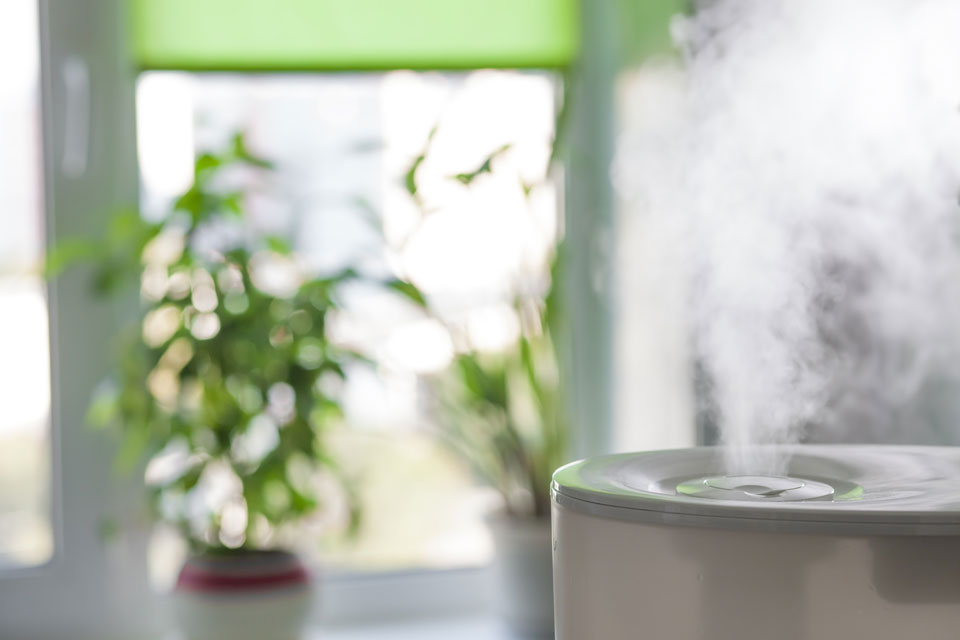It's no secret that indoor air is often more polluted than the outdoors. Over the years, numerous studies have proven this time and time again, and it's especially true in the workplace.
When you're at home, you have the luxury of being in total control of your indoor environment and can make choices that help cut down on airborne toxins. At work, however, this is usually not the case because there are so many different variables at play that you cannot control which lower the air quality around you.
Using an air purifier is one of the best solutions for creating a cleaner, healthier environment at the office and something that helps you avoid air quality-related health issues.
What is an air purifier?
Air purifiers are simple machines that do what their name suggests — purify the air. They do this in a variety of ways, which we'll explain below, but most importantly air purifiers get rid of things like dust, allergens, mold spores, chemical vapors, bacteria, odors and other particles that are harmful to breathe.
As you shop for an air purifier consider the following things to find the best product for your needs.
Consider different types of air purifiers
There are four types of technologies that air purifiers use to clean the air. Some air purifiers may only include one type of air filtration while others may contain a combination of all four. It's up to you how basic or advanced you want the product to be.
Here's how each technology works:
HEPA filter
Air purifiers that use a HEPA filter also contain a high-powered fan. This fan draws air in from around the room, passes it through the filter and then pushes clean air back out for you to breathe.
A HEPA filter is a very dense filter that's capable of trapping 99.97% of contaminants as small as 0.3 microns that pass through it. This includes particles such as dust, allergens and mold spores.
Ionization
Air purifiers that use ionization don't trap particles in a physical filter. What these devices do instead is send out charged ions into the air to bond with pollutants. As the bonds get formed, the particles become heavier and eventually can't stay airborne any longer.
Some ionizers do have electrostatic collection plates to collect these fallen particles, but most of the contaminants do fall on the ground. Ionizers can tackle pollutants as small as 0.01 microns which includes finer dust, allergens and bacteria.
Activated carbon filter
Interestingly, even though HEPA filters and ionizers can reduce microscopic toxins, they have no ability to trap odors or chemical vapors. These types of particles have a different composition and can only be removed by the process of absorption. Activated carbon filters are made up of a porous material that does exactly that.
Like HEPA filters, air must be drawn into the activated carbon filter by use of a fan in order to capture gaseous pollutants.
Ultra violet lighting
If you want an environment that's free of bacteria, mold and viruses, an air purifier equipped with an ultra violet light is what you'll want to get. Ultra violet lighting is a safe form of radiation that's beamed out into the air space and destroys the DNA structure of those contaminants. This renders these toxins harmless to your health and prevents you from getting sick.
Choose the right size for your office space
Like any appliance air purifiers come in all shapes and sizes. This means that some are built to handle personal workspaces while others are geared for an entire office floor.
Fortunately, as the buyer of this machine you get to decide on how much power you want the device to have and can get the product that fits your needs.
To choose the right size air purifier you'll need to consider the square footage of the space (or room) you want to use it in. To do that, just measure the width and length of the area (in feet) and multiply those two numbers together.
For example, if you wanted to purify a small cubicle space that's 5 ft. by 3 ft., then the math would be 5 x 3 = 15 sq. ft. If you wanted to buy an air purifier to clean the air on an entire office floor that's 20 ft. by 15 ft., the square foot equation would be 20 x 15 = 300 sq. ft.
With this number in hand, you can shop for air purifiers that are designed to cover the total square footage you need and know that it will operate efficiently.
Look at the ACH rating
Something else you'll want to look for on the technical specifications of air purifiers is the ACH rating or Air Changes per Hour. This rating indicates how many times per hour the device can exchange the dirty air with fresh air in the total square footage space.
Anything lower than a 4x ACH rating is not a good investment because it doesn't filter out the toxins fast enough to keep you as healthy. So, keep an eye out for this number when comparing products.
Consider additional features
Air purifiers have an assortment of options for you to choose between. Here are some of the top features to be on the look out for when shopping for a device for your office:
- Caster wheels or a carrying handle for easy mobility
- A remote
- Digital controls for fine tuning air quality power
- A humidifying function so that it both purifies and humidifies the air
- A mobile app that includes real-time air quality monitoring and displays the results
- Air quality sensors that monitor the air conditions and automatically adjust fan speeds to get rid of toxins
- Programmable timer for automatic shut off
- Filter change indicator
- Ability to use permanent filters to lower the lifetime cost of ownership
Patrick Holmes
Patrick is an indoor air quality specialist at Home Air Quality Guides. His passion is to help people create cleaner, healthier and more comforting environments at work and home. He loves sharing advice that is easy to understand and simple to follow. You'll find most of the articles he publishes to be on the topics of air purification and office cleaning tips.













